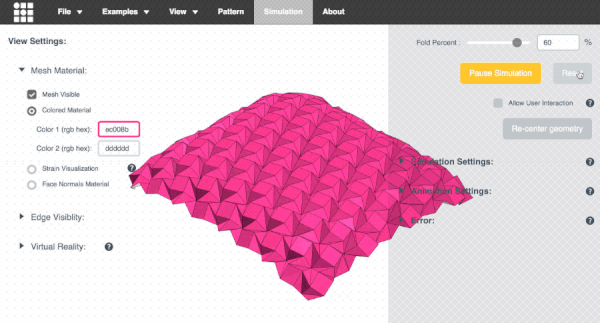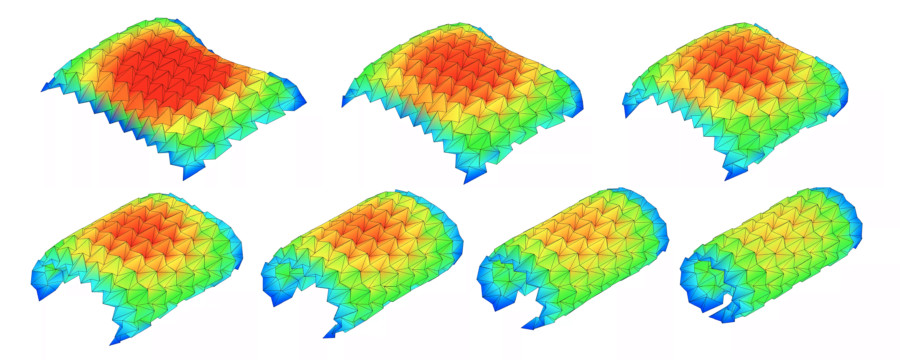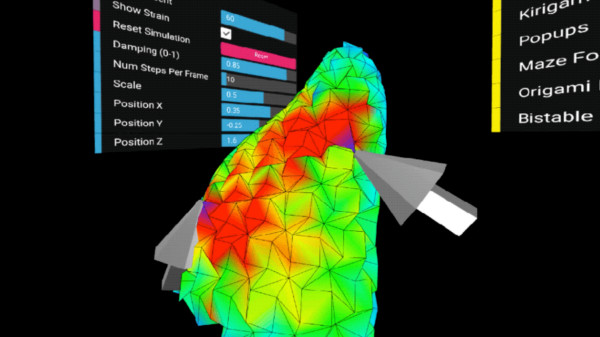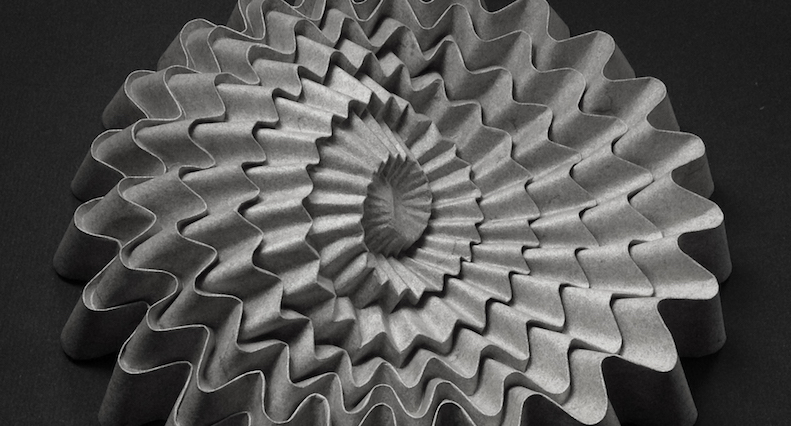

This app allows you to simulate how any origami crease pattern will fold. It may look a little different from what you typically think of as "origami" - rather than folding paper in a set of sequential steps, this simulation attempts to fold every crease simultaneously. It does this by iteratively solving for small displacements in the geometry of an initially flat sheet due to forces exerted by creases. You can read more about it in our paper:
Fast, Interactive Origami Simulation using GPU Computation by Amanda Ghassaei, Erik Demaine, and Neil Gershenfeld (7OSME)
All simulation methods were written from scratch and are executed in parallel in several GPU fragment shaders for fast performance. The solver extends work from the following sources:
Origami Folding: A Structural Engineering Approach by Mark Schenk and Simon D. Guest
Freeform Variations of Origami by Tomohiro Tachi
This app also uses the methods described in Simple Simulation of Curved Folds Based on Ruling-aware Triangulation to import curved crease patterns and pre-process them in a way that realistically simulates the bending between the creases.
Originally built by Amanda Ghassaei as a final project for Geometric Folding Algorithms. Other contributors include Sasaki Kosuke, Erik Demaine, and others. Code available on Github. If you have interesting crease patterns that would make good demo files, please send them to me (Amanda) so I can add them to the Examples menu.



https://cuttle.xyz/@forresto/Origami-simulator-tips-W4lDXuB5m0xh
https://nitter.42l.fr/kellianderson/status/1454871569981902848

How does our understanding of technology change when abstractions become tangible? In this course, paper acts as a bridge between code, mathematics, and our human sensory experience of the world.
When we fold, we imbue an inert material with pattern, structure, animation, function, and interface; a crease in paper is a re-programming of the material’s memory. Folded structures give us a means to touch and manipulate difficult problems and unlike simple machines (limited by static friction), folding systems can be applied at any scale, from nanometer to spacecraft scale. With an increased knowledge of folding mechanisms can we build more sustainable, ecologically-aware technology?
Lead by paper engineer and designer Kelli Anderson and origami artist and developer Robby Kraft, SFPC’s two-week session will explore the wide variety of ways that a piece of paper can produce function.
Paper art can be traced back to Japan, where it originated over a thousand years ago. From complex paper cutting to book carving, this is an ever expanding area of design that is hardly talked about...
Origami Club in English is information site about origami for everyone for free.
Eric Gjerde's musings on origami, tessellations, geometry, design, and art
Call for Works, call for papers and grants
The free disposable personal organizer
Writings of Golan Levin